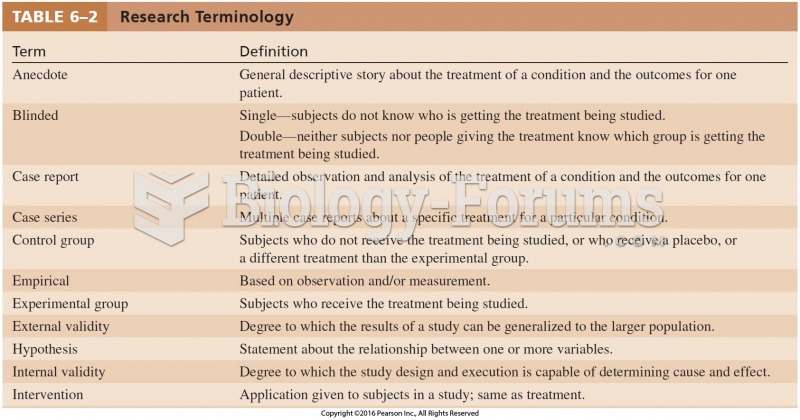Research has shown that teacher-student interaction differs according to the gender of the student (the gender of the teacher does not seem to matter), although most teachers are unaware of any inequities. Studies consistently show that boys have more interventions with teachers than do girls. For example, it has been found that teachers are more responsive to the disruptive behavior of boys than girls and more likely to reprimand boys. When children request attention, teachers generally respond to boys with instructions and to girls with nurturance. In addition, girls receive more attention when they are physically close to the teacher, whereas boys are given attention at a distance. It has also been found that the feedback received by boys and by girls on the intellectual quality of their work differs. For example, boys receive considerable criticism for failing to obey the rules, whereas girls receive criticism related to their performance. Boys attribute their failure to do well to lack of effort, whereas girls attribute it to a lack of ability. Do some girls, then, give up trying to succeed when they reach high school due to the responses their elementary teachers have given them? It is well established that girls generally perform better academically than boys in elementary school but falter in high school. For example, girls do not do as well as boys in science and math by the time they reach adolescence. In addition, girls typically take fewer advanced math classes than do boys in high school and college. Even though Title IX of the Educational Amendment Act of 1972 obliged schools to provide equal treatment for males and females, schools are still shortchanging girls according to a report by the AAUW. Although more girls are now involved in athletics, the contributions and experiences of females are not as visible as are those of males in textbooks. Furthermore, the pace of change is slow in gender-segregated enrollment patterns in vocational education, with girls primarily enrolled in office and business-training programs, and boys in programs leading to higher-paying trade jobs. Sexuality and the realities of sexual activity (pregnancy, disease, rape) are rarely discussed in schools, although, by law, sexual harassment is defined and consequences delineated. Teachers must be trained to foster assertive and affiliative skills in both girls and boys. School curricula and textbooks should be monitored for gender stereotypes and provide positive role models for both girls and boys. The pattern of organization for the second paragraph is
a. process.
b. summary.
c. contrast.
d. comparison.
Question 2
Research has shown that teacher-student interaction differs according to the gender of the student (the gender of the teacher does not seem to matter), although most teachers are unaware of any inequities. Studies consistently show that boys have more interventions with teachers than do girls. For example, it has been found that teachers are more responsive to the disruptive behavior of boys than girls and more likely to reprimand boys. When children request attention, teachers generally respond to boys with instructions and to girls with nurturance. In addition, girls receive more attention when they are physically close to the teacher, whereas boys are given attention at a distance. It has also been found that the feedback received by boys and by girls on the intellectual quality of their work differs. For example, boys receive considerable criticism for failing to obey the rules, whereas girls receive criticism related to their performance. Boys attribute their failure to do well to lack of effort, whereas girls attribute it to a lack of ability. Do some girls, then, give up trying to succeed when they reach high school due to the responses their elementary teachers have given them? It is well established that girls generally perform better academically than boys in elementary school but falter in high school. For example, girls do not do as well as boys in science and math by the time they reach adolescence. In addition, girls typically take fewer advanced math classes than do boys in high school and college. Even though Title IX of the Educational Amendment Act of 1972 obliged schools to provide equal treatment for males and females, schools are still shortchanging girls according to a report by the AAUW. Although more girls are now involved in athletics, the contributions and experiences of females are not as visible as are those of males in textbooks. Furthermore, the pace of change is slow in gender-segregated enrollment patterns in vocational education, with girls primarily enrolled in office and business-training programs, and boys in programs leading to higher-paying trade jobs. Sexuality and the realities of sexual activity (pregnancy, disease, rape) are rarely discussed in schools, although, by law, sexual harassment is defined and consequences delineated. Teachers must be trained to foster assertive and affiliative skills in both girls and boys. School curricula and textbooks should be monitored for gender stereotypes and provide positive role models for both girls and boys. From the passage, you can conclude that the author believes
a. giving more time and attention to elementary school girls would not produceany real changes in their behavior or academic success.
b. Title IX has been successful in bringing about equal treatment of boys andgirls in schools.
c. reprimanding boys in school does not result in much improved behavior.
d. if elementary school teachers treated girls differently, more of them wouldattempt harder courses in high school.







